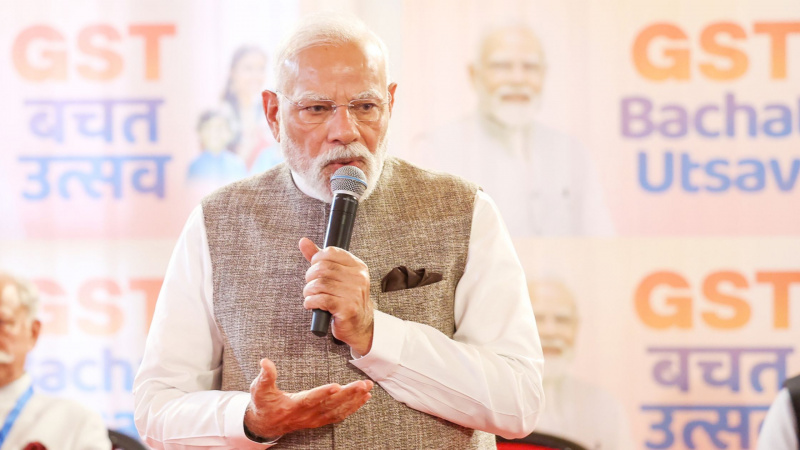ISRO’s EOS-8 to Launch on Independence Day via Small Satellite
- by B2B Desk 2024-08-08 12:25:18
The Indian Space Research Organisation (ISRO) is preparing to launch the Earth Observation Satellite-8 (EOS-8) using its newly developed Small Satellite Launch Vehicle, SSLV-D3. This significant event is scheduled for August 15, coinciding with Independence Day, according to a statement from the Indian space agency.
ISRO announced on X that the third and final flight of the SSLV will carry the EOS-08 microsatellite into space on August 15, 2024, at 09:17 IST from Sriharikota.
SSLV-D3/EOS-08 Mission
— ISRO (isro) August 7, 2024
SSLV's third & final flight will launch EOS-08 microsatellite on August 15, 2024, at 09:17 IST from Sriharikota
It completes the SSLV Development Project and enables operational missions by Indian industry and NSIL.https://t.co/lPNreIHFd0 pic.twitter.com/MTacRx5qG5
Objectives of the mission
The objectives of the EOS-08 mission by ISRO are to:
- Design and develop a microsatellite.
- Develop payload instruments that are compatible with the microsatellite bus.
- Incorporate new technologies that will be essential for future operational satellites.
Details About EOS-8
The EOS-8 satellite, built on the Microsat/IMS-1 platform, carries three key payloads: the Electro Optical Infrared Payload (EOIR), the Global Navigation Satellite System-Reflectometry payload (GNSS-R), and the SiC UV Dosimeter.
EOIR Payload: This payload is designed to capture images in the Mid-Wave Infrared (MIR) and Long-Wave Infrared (LWIR) bands, functioning both during the day and at night. It will be used for various applications, including satellite-based surveillance, fire detection, disaster monitoring, environmental assessment, volcanic activity observation, and monitoring industrial and power plant disasters.
GNSS-R Payload: This payload will demonstrate the use of GNSS-R-based remote sensing for several applications, such as assessing soil moisture, analyzing ocean surface winds, studying the cryosphere in the Himalayan region, detecting inland water bodies, and monitoring floods.
SiC UV Dosimeter: This device will monitor UV radiation at the viewport of the Crew Module for the Gaganyaan Mission. Additionally, it functions as an alarm sensor for detecting high levels of gamma radiation.
The EOS-8 satellite is configured to operate in a Circular Low Earth Orbit (LEO) at an altitude of 475 km with an inclination of 37.4 degrees. It has a mission life of one year, a total mass of approximately 175.5 kg, and can generate around 420 W of power. It will be launched aboard the SSLV-D3/IBL-358 rocket.
The satellite features notable technological advancements, including an integrated avionics system called the Communication, Baseband, Storage, and Positioning (CBSP) Package. This system consolidates several functions into one efficient unit and is equipped with cold redundant systems using commercial off-the-shelf (COTS) components and evaluation boards. It offers up to 400 GB of data storage.
For its onboard technology demonstrations, the satellite is equipped with a structural panel featuring an integrated PCB, an embedded battery, a Micro-DGA (Dual Gimbal Antenna), and an M-PAA (Phased Array Antenna). The miniaturized Antenna Pointing Mechanisms allow the satellite to rotate at 6 degrees per second and achieve a pointing accuracy of ±1 degree.
Also Read: Top 5 best defence sector stocks in India 2024

POPULAR POSTS
The Agentic Revolution: Why Salesforce Is Betting Its Future on AI Agents
by Shan, 2025-11-05 10:29:23
OpenAI Offers ChatGPT Go Free in India: What’s Behind This Big AI Giveaway?
by Shan, 2025-10-28 12:19:11
Zoho Products: Complete List, Launch Years, and What Each One Does
by Shan, 2025-10-13 12:11:43
Arattai vs WhatsApp: Which Messaging App Should You Choose in 2025?
by Shan, 2025-10-10 11:55:06
Top Buy Now Pay Later (BNPL) Apps for Easy Shopping in 2025
by Shan, 2025-09-22 10:56:23
iPhone 17 Sale in India Begins: Full Price List, Launch Offers and Store Availability
by Shan, 2025-09-19 12:00:45
Apple September 2025 Event Recap: iPhone 17, iPhone Air, Apple Watch Series 11, and India Pricing Revealed
by Shan, 2025-09-10 09:55:45
RECENTLY PUBLISHED

Loan EMIs to Drop as RBI Slashes Repo Rate - Full MPC December 2025 Highlights
- by Shan, 2025-12-05 11:49:44

Pine Labs IPO 2025: Listing Date, Grey Market Premium, and Expert Outlook
- by Shan, 2025-11-05 09:57:07

Top 10 Insurance Companies in India 2026: Life, Health, and General Insurance Leaders Explained
- by Shan, 2025-10-30 10:06:42

Best Silver Investment Platforms for 2025: From CFDs to Digital Vaults Explained
- by Shan, 2025-10-23 12:22:46

Zoho Mail vs Gmail (2025): Which Email Platform Is Best for Businesses, Startups, and Students?
- by Shan, 2025-10-09 12:17:26

PM Modi Launches GST Bachat Utsav: Lower Taxes, More Savings for Every Indian Household
- by Shan, 2025-09-24 12:20:59




 Subscribe now
Subscribe now 